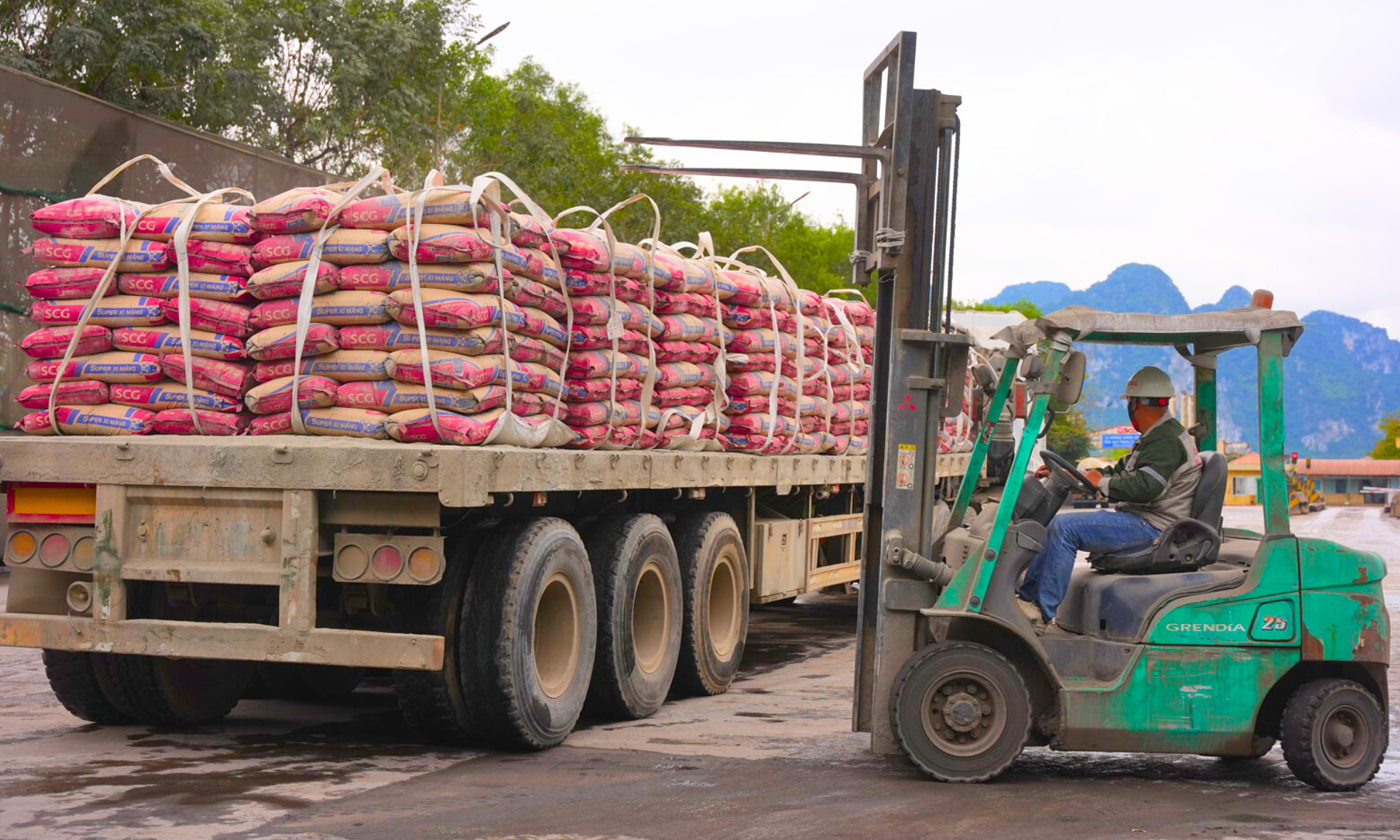Targeting Netzero by 2050, Vietnam is promoting "greening" of construction materials. From 1/1/2026, regulated materials must have energy labels before circulation. This regulation requires businesses to meet technical standards, invest in technology, and make environmental data transparent.
Recognizing this trend, SCG Vietnam has implemented a roadmap to standardize environmental information for its products, with sustainable development as its strategic orientation. The company has built a portfolio of cements with EPD (Environmental Product Declaration) certification according to international standards. Currently, 19 of SCG's main cement lines in Vietnam have been granted international EPD certificates—more than half of the group's total of 36 EPD-certified products.
A company representative said these certifications demonstrate a commitment to supporting Vietnam's construction industry towards green and sustainable development.
 |
SCG's cement factory in Vietnam. Photo: SCG |
SCG's cement factory in Vietnam. Photo: SCG
The EPD (Environmental Product Declaration) certification is an international standard that assesses the environmental impact of a product based on the Life Cycle Assessment (LCA) method, from raw material extraction, production, and use, to disposal. EPD data is third-party verified, ensuring transparency and accuracy. As a result, EPD-certified materials help projects score points in green building certification systems like LEED or BREEAM.
To meet the international EPD standard, SCG Vietnam has implemented a series of improvements throughout its production chain, aiming to substantially reduce emissions and make the product life cycle transparent. Since 2014, the company has applied a waste heat recovery system at all of its factories, reusing about 30% of the heat to generate electricity, saving 60 million kWh of electricity per year—equivalent to 33,807 tons of CO2. The company also replaces 30% of coal fuel with renewable biomass, reducing 90,000 tons of coal and about 157,715 tons of CO2 annually. In parallel, SCG optimizes material mixing and uses lower-emission materials, further reducing 141,575 tons of CO2 per year. In total, these solutions help the unit cut carbon emissions by up to 20% compared to conventional cement production.
 |
Many civil and infrastructure projects in Vietnam prioritize the company's cement. Photo: SCG |
Many civil and infrastructure projects in Vietnam prioritize the company's cement. Photo: SCG
In addition to environmental factors, SCG cement is also highly regarded for its quality, meeting international standards such as ASTM and BSEN, expanding export potential. The SCG Low Carbon line applies the proprietary SCG Nano technology, which helps fill gaps in concrete, limiting the penetration of dirty water and mold. The product achieves compressive strength exceeding 45% of the TCVN 6260:2020 standard and reduces CO2 emissions by up to 20% thanks to its green production process.
SCG's Song Gianh cement has high strength, suitable for both civil and industrial projects, and is produced using technology from the Federal Republic of Germany, ensuring long-term durability.
For projects requiring fast, continuous, and stable progress, such as factories, industrial parks, or complex technical structures, SCG industrial cement maximizes efficiency and consistent quality. In addition, SCG's bulk and hydraulic cement lines, such as PCB50 - Bulk, PCB40 CLC - Bulk, and Hydraulic (PCC) EXP, provide high efficiency for large-scale projects, technical infrastructure, or projects exposed to water.
Minh Tuan, a construction material distributor with 15 years of experience in the Quang Tri area, said that as a young person concerned about the environment, he appreciates SCG cement for its quality assurance and its composition, which meets stringent emission standards. "This is also the reason why I have always recommended the product to contractors during construction for many years," Tuan said.
A company representative said that proactiveness is a smart business strategy that contributes practically to national goals for emission reduction, sustainable development, and raising the quality of construction projects in Vietnam.
(Source: SCG)












